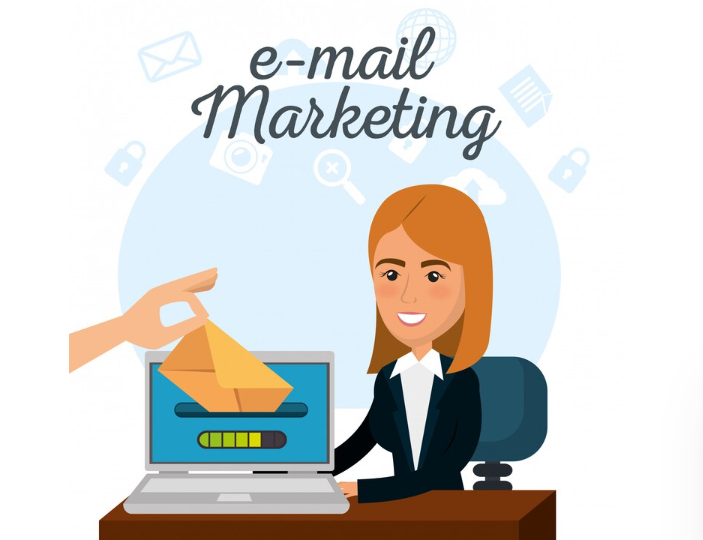Last updated on July 3rd, 2024 at 06:12 pm
In the digital marketing space, email marketing is still considered highly potent and its relevance has grown even bigger over time. Social media and other digital platforms for marketing continue to gain ground. But, email marketing still remains one of the most effective ways to achieve good results in any business regardless of size.
In this article, we will explain why it is important not to overlook email marketing. We will see what its advantages are and how you can utilise this tool correctly to grow your business.
Additionally, we will touch on important components, such as email lists. software used for email campaigns, services provided by companies specialising in email promotions, and success methods when running an emailing campaign.
Why Do People Continue To Use Email Marketing?
No Alternative As Far As Reach And Penetration Are Concerned
There is no other channel that can boast of such a wide reach as emails do. Almost everybody uses this universal medium of communication – there are billions of active users all around the planet.
Email marketing gives businesses an opportunity to connect with their customers through various geographical locations. Whether it is different languages spoken or levels of education attained. The easy approach of email transcends communication beyond many barriers.
Direct Access To Clients
Emails give you direct access to the very inbox belonging to each person who has subscribed to receive them from you. In algorithms, there’s limited visibility like those employed on different social media sites. Oftentimes, posts appear only if certain conditions are met
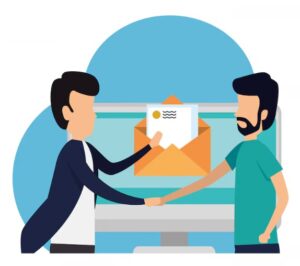
But, here everything sent reaches subscribers directly thus heightening chances for interaction. This means more leading conversions due to timeliness since the right content gets delivered at appropriate moments.
ROI (Return On Investments)

Over the years, many people have wondered why they should invest so much money in advertising. Especially, via electronic mail when there were cheaper alternatives available such as FB ads? Well, statistics state otherwise showing that out of all types of campaigns carried out online none can give higher returns than emailing ones do.
Personalization And Segmentation
That’s right, you can personalize emails to your absolute content. This is where the details that have been gathered over time come into play.
This info regarding a client’s preferences and factors like age or location helps with sending them specific types of messages. Messages that are likely going resonate better thus increasing open rates.
How To Grow And Maintain Your Email List in Email Marketing?
Importance Of Quality In An E-Mail Database in Email Marketing
A quality base should be the starting point for any successful marketing campaign using electronic mail. Such a list must have subscribers who are ready and willing to receive mail from your company. Creating such a database requires strategy which involves providing valuable resources in exchange for signing up.
What are The Best Techniques For Expanding Mailing Lists?
- Use Opt-In Forms: Place opt-in forms in different parts of your website like sidebars, footers, etc so that visitors can sign up easily.
- Give Freebies: Give away free stuff such as eBooks, templates, or even trials some services just encourage people to join a mailing list.
- Run Competitions: Competitions and giveaways always work wonders bringing new leads fast while at the same time building referral networks hence growing rapidly.
- Leverage Social Media: Promote newsletter across multiple accounts especially popular platforms where many potential customers hang out most frequently.
How To Pick The Right Email Marketing Software For Your Brand?
Key Things To Consider When Picking Email Marketing Tools
- Customer Onboarding: Use email marketing to welcome new customers, provide them with relevant information, and guide them through the onboarding process.
- Drip Campaigns: Set up drip campaigns to nurture your leads and keep them engaged over time. Send a series of emails that gradually introduce your products or services and provide valuable content.
- Customer Surveys: Conduct customer surveys through email to gather feedback, understand their needs better, and improve your products or services accordingly.
- Win-back Campaigns: Identify inactive subscribers or lost customers and send win-back campaigns with special offers or incentives to re-engage them.
What are Email Marketing Best Practices?
1. Compliance with Anti-Spam Laws
When conducting email marketing campaigns, it’s essential to comply with anti-spam laws such as the CAN-SPAM Act (United States) or CASL (Canada). Ensure that you:

Include a valid physical address in every email.
Provide recipients with an easy way to opt-out of receiving future emails.
Honor unsubscribe requests promptly.
2. Mobile-Friendly Design

With the increasing use of mobile devices for accessing emails, it’s crucial to ensure that your email templates are mobile-friendly. Use responsive design techniques to boost your emails for different screen sizes.
3. Testing Across Different Email Clients

Emails can appear differently across various email clients and devices. Test your emails across popular email clients (e.g., Gmail, Outlook) to ensure they display correctly and maintain their given design.
4. Subject Line Optimization
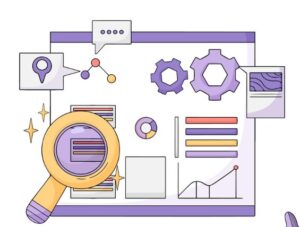
Crafting compelling subject lines is crucial for improving open rates. Experiment with different subject line lengths, personalization approaches, and keywords related to your audience’s interests or pain points.
5. Consistent Branding

Maintain consistent branding throughout all your email campaigns by using the same colours, fonts, logos, and overall design style. This helps reinforce brand recognition and reinforces trust with subscribers.
How to Enhance Customer Retention with Email Marketing?
Email marketing still works and we are all about it. It is a powerful tool in driving customer engagement and retention. You can use it to build strong relationships with your subscribers by providing them with valuable content that they find relevant. This will keep them engaged with your brand.
- Welcome Emails: Send welcome emails to new subscribers to introduce them to your brand and set the tone for future communications.
- Newsletter Emails: Regularly send newsletter emails to keep your subscribers informed about your latest news, products, and promotions.
- Transactional Emails: Use a transactional email to provide important information about purchases, shipping updates, and account activity.
What must you consider regarding an email marketing campaign?
1. Complying with Regulations
Ensure that you follow email laws such as the CAN-SPAM Act while carrying out email marketing campaigns. Obtain consent from recipients before sending them emails or giving them the option of opting out at any time during the subscription process. Plus, include the company’s physical address in every sent mail so as not only to meet legal requirements but also to appear professional.
2. Cleaning up Your Database
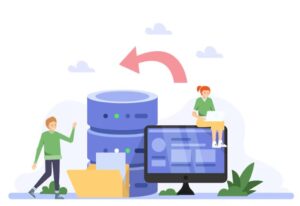
It’s good practice to always clean up one’s database regularly thus removing inactive accounts together with invalid ones. This improves the deliverability rate hence more messages reaching active individuals who have subscribed willingly to receiving such communication.
3. Quality is Better
Overwhelming recipients’ inboxes by sending too many irrelevant or unnecessary messages at once is just time-consuming. It spams their mailboxes which may lead them to mark all subsequent emails from the same source as spam.
This very thing prevents other important notices from being delivered. Your focus should be on ensuring each message adds value thus making people appreciate it more while acting upon presented calls for action accordingly.
4. Tracking Aftermath Using Analytics Tools
Email analytics give insights into what happens after the recipient opens the message. It tracks if people click the link provided within the body text leading back onto the landing page.
These are designed specifically for tracking purposes where conversions can be monitored closely against set goals. You can also see who unsubscribes from future emails altogether due lack of further interest in related content.
5. Keeping Knowledge of Latest Innovations
Stay up to date with advances made within this field such as the adoption of AMP emails. These are capable of being interactive, unlike traditional HTML format.
Try out different types of templates provided by respective software used whenever creating new campaign drafts. Bear in mind the current trends so that recipients remain engaged throughout reading through the entire mail.
What are Email Marketing Costs?
The cost of email marketing can vary based on a number of factors, such as the size of your mailing list, the complexity of your email campaign, and the features provided by your email marketing service. Here is a breakdown of potential costs:
1. Email Marketing Software Cost
Email marketing software can range from free to several hundred dollars per month. Free plans usually have limitations on the number of emails you can send and the features available.
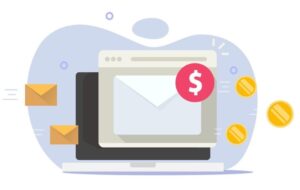
However, paid plans typically start around $10-30/month for basic features and can go up to $300+/month for advanced features like marketing automation, advanced segmentation, or A/B testing.
2. Design & Content Creation
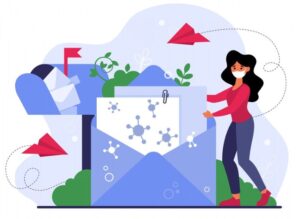
Creating high-quality email content, including professional email templates and engaging copy, may require additional investment. Costs may vary depending if you use in-house resources or hire external designers/copywriters.
3. List Management

Maintaining and growing an email list involves costs related to data management, list hygiene, and compliance with regulations like the CAN-SPAM Act.
4. Total Cost
On average, small businesses spend between $50-$300/month on email marketing. With bigger companies, it can go over $1000 depending on their visibility. Even though, this varies greatly depending on the sophistication level and size of the list.
What are Key Email Marketing Metrics?
To measure the success of your email marketing campaigns, there are several key metrics that marketers rely on. Listed down are some important ones:
- Open Rate: The open rate is the percentage of recipients who opened an email. The average open rate for email marketing ranges widely across industries but a good benchmark is between 15%-25%. Factors affecting open rates include subject lines, timing, or sender reputation.
- Click-Through Rate (CTR): CTR measures what portion out of the total emails sent were clicked by any recipient at least once. It indicates how successful the campaign was at getting people interested enough to interact further with the brand through the website. This figure should be kept above 2%.
- Bounce Rate: Bounce rate is the fraction of emails that were unable to be sent to the recipient’s inbox. High bounce rates can impact email deliverability and customers ineffectively.
- Conversion Rate: Conversion rate measures what proportion out of all recipients completed the desired action like making a purchase or filling a form. This should be the highest among other metrics because it shows whether the campaign has ultimately achieved its goal.
- Unsubscribe Rate: The Unsubscribe rate indicates how many people unsubscribed from your mailing list after receiving this particular message. It is useful in determining whether specific types of information are valued by subscribers or not.
What are Winning Email Marketing Strategies?
To make your email marketing campaigns more effective, you should follow best practices and use advanced tools and techniques. Take down these strategies you may consider:
1. Email Marketing Software
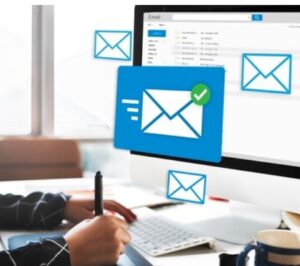
Invest in robust email marketing software such as Campaign Monitor. It will help streamline the creation, sending, and analysis of campaigns through features like drag & drop email builders, automation workflows, or detailed analytics.
2. Sectionalizing and Customizing

Sectioning your email list according to demographics, purchase history, and engagement levels is a way of creating more specific and appropriate email content. Personalized emails can dramatically boost open rates as well as CTR.
3. Marketing Automation
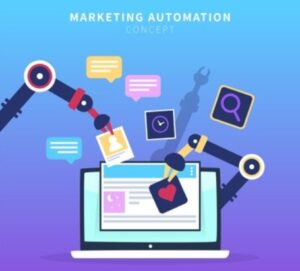
Marketing automation tools allow companies to send timely and relevant emails based on user behaviour and triggers. For example, welcome emails for new subscribers, transactional emails for purchases made by customers, or re-engagement campaigns targeting inactive subscribers.
4. A/B Testing
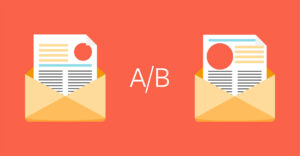
A/B testing involves sending two variations of an email to a small segment of your list to see which version performs better. This can help optimize subject lines, email copy, and call-to-action buttons for improved engagement.
5. Mobile Optimization

With a large portion of emails being opened on mobile devices nowadays it’s important that all your messages are designed with this in mind. So, they can display properly across different screen sizes – using responsive templates helps achieve this goal too.
6. Interactive & AMP Emails

Interactive emails along with AMP (Accelerated Mobile Pages) technology allow recipients to take actions directly within the email itself. Things like filling out forms or making purchases, etc. This increases their involvement with the brand/product being promoted through such communication channels.
7. Compliance with Guidelines

Ensure compliance with the CAN-SPAM Act by including a clear unsubscribe link in every campaign sent out. Plus, avoid any deceptive subject lines among other things.
How to Utilize Email Marketing with Different Marketing Channels?
Combining email marketing with other digital marketing channels can increase your exposure, boost engagement rates, and deliver better overall results. Here is how you can maximize the potential of email marketing alongside other marketing strategies.
1. Social Media Integration
You can supercharge your campaigns and grow your audience by combining email marketing with social media. Listed down are some ways to do that:

- Cross-Promotions: Promote sign-up forms and email newsletters on the social media accounts to grow your mailing list. Alternatively, include buttons for sharing content on various platforms in emails so that subscribers can share it.
- Targeted Advertising: Use custom audiences from email lists in social media ad targeting. Facebook or Instagram among others lets you upload your email list for enhancing ads towards specific segments.
- Content Repurposing: Share snippets of email content on social media sites like Twitter or Facebook which drives traffic back either into blogs or websites. This increases engagement across these two different platforms while also keeping people informed through multiple channels simultaneously.
2. Content Marketing Synergy
Emails sent through content and marking should always go hand in glove as they both share similar objectives – providing valuable information to our respective audiences. This is what we need to do:
![]()
- Newsletter Emails: Publish the latest posts from blogs, videos, etc. via a newsletter campaign. This will let you have more views generated from recipients who visit a site more often than not after receiving such emails. This will help keep them up-to-date with fresh useful tips regularly while driving traffic back to the website itself at the same time.
- Lead Magnets: Giveaway free eBooks/whitepapers/webinars among others in exchange for someone’s contact details like name/email address. This in return gets added to their database where they could later send out promotional materials about new product launches, etc. It will grow the subscriber base over period of time through these channels too.
- Content Personalization: Divide one’s mailing list according to interest areas shown by subscribers when signing up. For instance, this allows the creation of personalized emails containing various pieces of content that likely appeal to most of them..
3. SEO and PPC Campaigns
Email marketing always complements search engine optimization (SEO) efforts as well pay per click (PPC) campaigns too:

- PPC Follow-Up: Whenever there are leads generated from pay-per-click ads, it would be wise to follow up those leads by means of an email campaign. Here, receivers can get additional information that might provided along with some special offers aimed at encouraging conversions.
- SEO Content Distribution: Sharing a site’s highly ranked SEO content via emails sent out periodically helps bring more traffic numbers. Especially, towards such sites enhancing positions occupied by search engines’ rankings.
4. Influencer and Affiliate Marketing
Influencer marketing programs become stronger when supported by email campaign initiatives:

- Influencer Collaboration: Establish working relationships between influencers who create exclusive offers/content for those subscribed through emails. This will help promote lists and expand reach among potential consumers beyond what would have been possible without using this strategy alone.
- Affiliate Offers: Incorporate affiliate products/services within promotional materials shared via electronic mailers. This way, additional revenue streams can realized through commissions earned whenever any referred visitor makes a purchase.
5. Event Marketing
Using email campaigns during events planning helps achieve maximum attendance levels together with active participation throughout such occasions:

- Event Invitations: Send customized invites directly into people’s mailboxes urging them to join upcoming webinars, conferences, or even local happenings. It’s believed that a higher number sign up and attend from email invites. This, in return, creates awareness about the event among more individuals.
You may lead to increased sales volumes realized thereafter – ensure reminders are followed up using automated response systems though. - Post-Event Follow-Up: Immediately after hosting a successful event, it’s always advisable to send out thank you emails to participants. Share key takeaway points discussed during session recordings made available for download purposes. This keeps individuals engaged in future events planning.
6. CRM Integration
When your CRM system syncs up with an email marketing platform, it becomes easier to manage campaigns:

- Data Synchronization: Ensure both contact databases are up-to-date by syncing them. this way, no one gets left behind when targeting specific groups or for more accurate segmentation possible.
- Mapping The Customer Journey: Use Consumer Relationship Management (CRM) data to map out the process that a customer goes through when interacting with your business. Send emails that are relevant to that stage at the right time. This could help in retaining customers and increasing their lifetime value.
So, Should You Consider Email Marketing?
Email Marketing is one of the most powerful yet cost-effective marketing methods available today. Especially, when it comes down to engaging audiences, driving conversions as well building brand loyalty.
Despite the emergence of various digital marketing avenues, email marketing offers unique advantages such as direct communication pathways between brands/businesses & consumers/clients.
Through the employment of the best email marketing service as well as automation tools, marketers can create tailor-made messages that resonate best with their target markets. They can keep track of different performance indicators like open rates, click-through rates (CTRs) conversion rates so that they know what works where and when thus allowing continuous improvement.
Regardless of whether you are starting from scratch with no subscribers yet or just refining your existing email campaign strategies. There are numerous benefits waiting around every corner begging us not to ignore them any longer because according to statistics.

